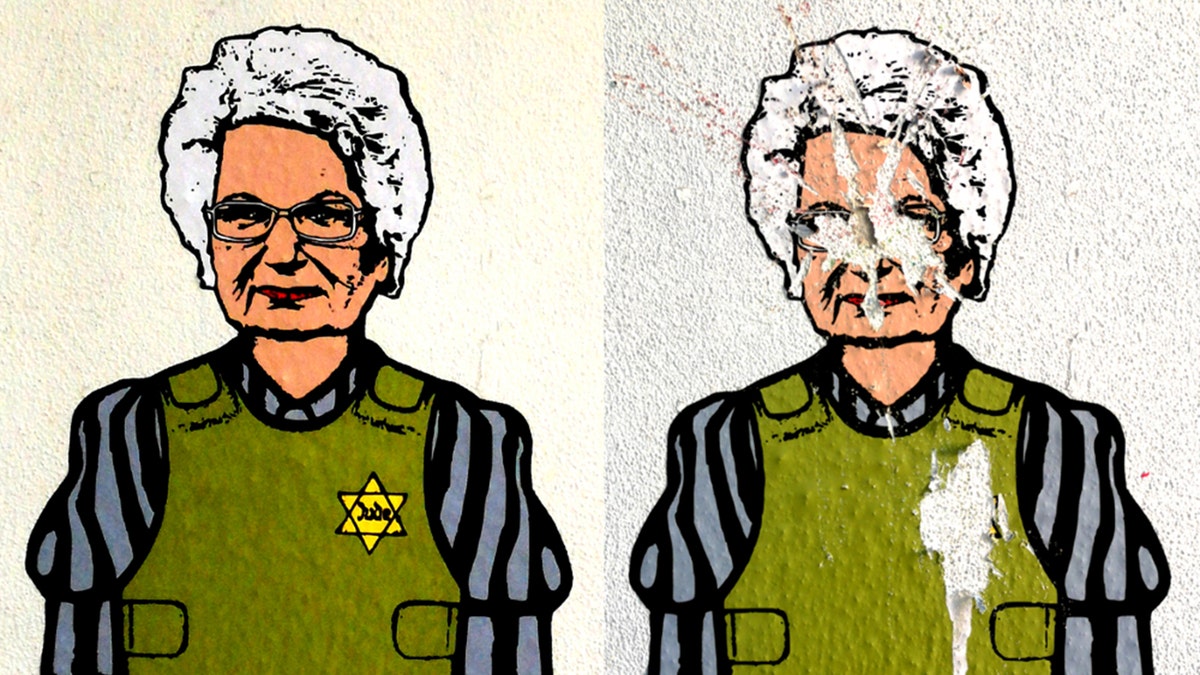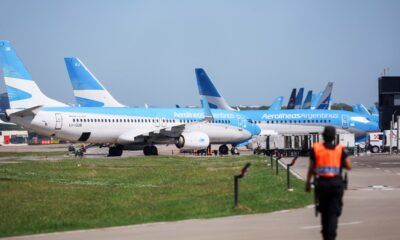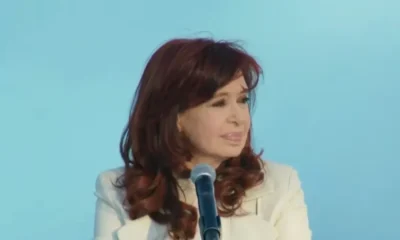INTERNACIONAL
Rosetta Stone found in 1799, wasn’t used to decipher hieroglyphs for many years

The Rosetta Stone was vital in understanding the writing system of hieroglyphics, which spent years as a forgotten writing system.
After the stone was first discovered, it took many years for it to be deciphered.
Now, it belongs to The British Museum in London, England, where it has been since 1802, briefly being moved during World War I for its safe keeping.
The Rosetta Stone allowed researchers to decipher hieroglyphics. Jean-François Champollion announced that he deciphered the message in 1822. (Han Yan/Xinhua via Getty Images I David Cliff/SOPA Images/LightRocket via Getty Images I Ann Ronan Pictures/Print Collector/Getty Images)
THE GREAT BASIN BRISTLECONE PINE, DATING BACK ALMOST 5,000 YEARS, IS WORLD’S OLDEST TREE
- Who discovered the Rosetta Stone?
- What is the Rosetta Stone, and why is it important?
- What is the actual message in the Rosetta Stone?
1. Who discovered the Rosetta Stone?
The Rosetta Stone was discovered in 1799 by Napoleon Bonaparte’s soldiers, while he was campaigning in Egypt, according to The British Museum.
The stone was found built into an ancient wall near the town of Rashid (Rosetta).
When the British defeated the French, the ancient stone was put into British possession in 1801, according to History.com.

The Rosetta Stone was first discovered in 1799. (AMIR MAKAR/AFP via Getty Images)
WHO IS BANKSY? THE ENGLAND-BASED STREET ARTIST’S WORK IS WELL-KNOWN, BUT HIS IDENTITY IS A MYSTERY
The Rosetta Stone has remained in British possession ever since.
2. What is the Rosetta Stone, and why is it important?
The Rosetta Stone is a broken part of a bigger stone slab. It measures 44 inches tall and 30 inches wide, according to History.com.
The Rosetta Stone is inscribed with the same text in different scripts; Demotic, hieroglyphic and Greek.
The stone is important as it played a vital role in scholars deciphering Egyptian hieroglyphs.
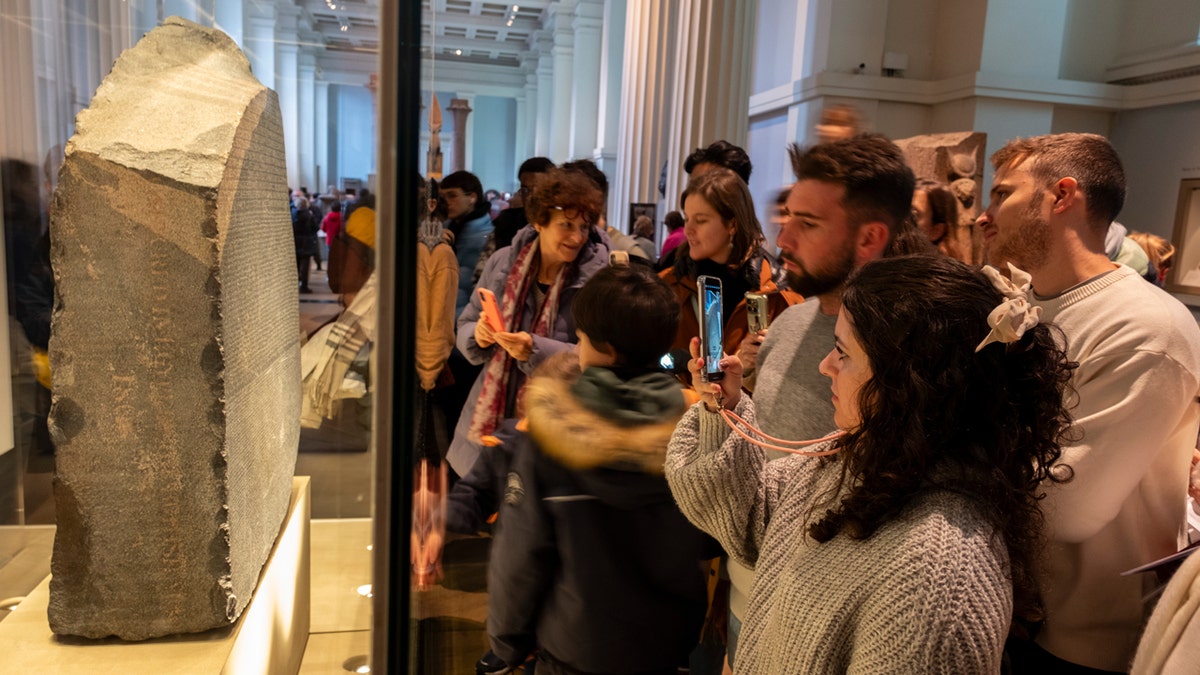
The Rosetta Stone is currently housed at The British Museum in London, England. (Mike Kemp/In Pictures via Getty Images)
THE UNIVERSITY OF AL-QARAWIYYIN IN MOROCCO HOLDS GUINNESS WORLD RECORD FOR OLDEST HIGHER LEARNING INSTITUTION
After the 4th century A.D., the writing system was no longer used, making it forgotten for many years, until it was understood with the deciphering of the message inscribed on the ancient artifact.
3. What is the actual message in the Rosetta Stone?
Decoding the message of the Rosetta Stone was a combined effort of several scholars over the course of many years.
The first to make major progress on decoding the Rosetta Stone was an English physicist named Thomas Young.
In 1814, Young determined that the hieroglyphs that were enclosed in ovals, called cartouches, were royal names, according to History.com.
French scholar Jean-François Champollion, built upon Young’s work, and announced in 1822 that he successfully deciphered the message.
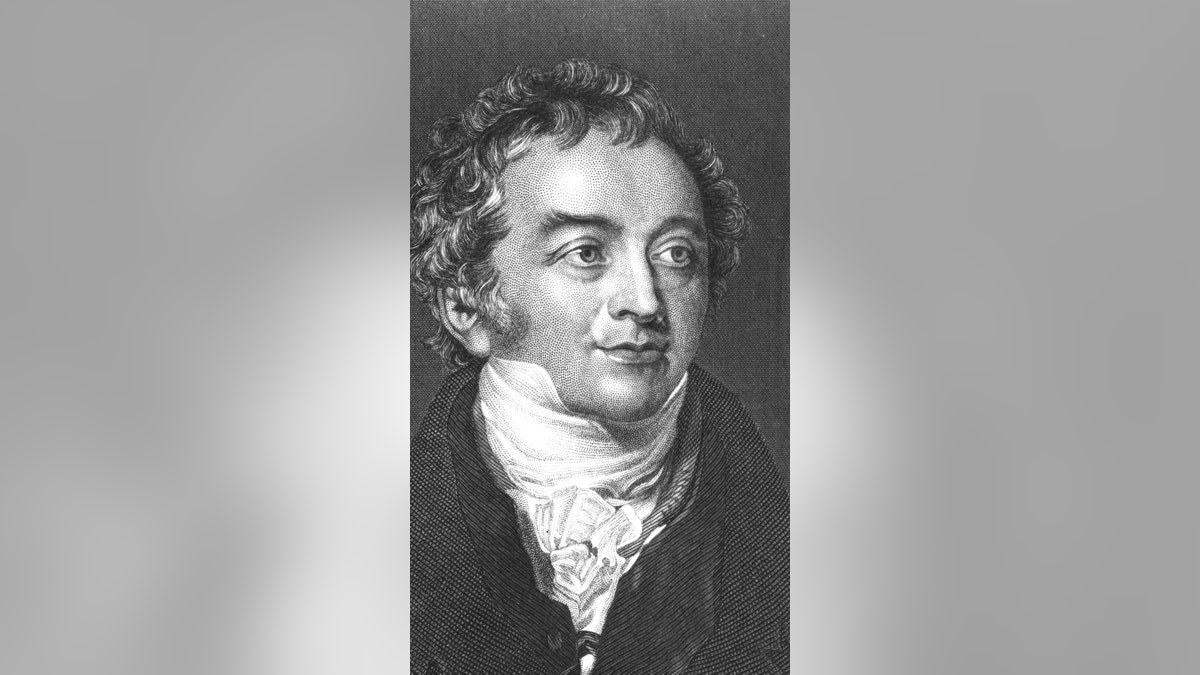
Thomas Young played a vital part in deciphering the Rosetta Stone. (Oxford Science Archive/Print Collector/Getty Images)
CLICK HERE TO GET THE FOX NEWS APP
The message inscribed on the stone is a decree regarding Ptolemy V Epiphanes, according to The British Museum, who was king of the Ptolemaic dynasty of Ancient Egypt. It was issued by a council of priests and stated that «the priests of a temple in Memphis supported the king,» per the museum.
The stone’s decree dates back to 196 B.C., according to Britannica and details many of his accomplishments, including tax reductions and restoring peace in Egypt, per the source.
INTERNACIONAL
Italian mural of Holocaust survivors defaced in act of antisemitism: ‘Damages walls but not history’

A mural of Holocaust survivors in Italy has been defaced in a «demented act» of vandalism.
The Milanese mural by artist aleXsandro Palombo features Holocaust survivors Liliana Segre and Sami Modiano, whose faces and Stars of David were scratched out. The Auschwitz-Birkenau survivors were portrayed in striped camp uniforms and bulletproof vests.
SENATORS VOW TO BAN PRO-HAMAS MIGRANTS FROM ENTERING US WITH BIPARTISAN PUSH
The artwork, unveiled on September 28, aimed to emphasize Holocaust remembrance as antisemitism rises in Europe.
The defacement came just after a pro-Palestinian rally in Milan where some demonstrators targeted Segre, a 94-year-old Italian senator, labeling her a «Zionist agent.» Palombo, outraged by the rhetoric, responded with the mural.
Palombo’s mural featured two of Italy’s most prominent Holocaust survivors. (Courtesy of aleXsandro Palombo)
The vandalism has drawn a backlash across Italy. Mario Venezia, head of Italy’s Holocaust memorial museum, called it a «demented act» that «damages walls but not history.» Italian Democratic Party official Piero Fassino also condemned the act, calling it a «cowardly assault on Holocaust memory.»
Palombo’s murals frequently tackle hot-button issues. Last year, he created a mural showing Holocaust victim Anne Frank next to a young Palestinian girl.
ISRAELI LEADER TELLS PRESIDENT BIDEN ‘WE HAVE TO GET HOSTAGES BACK’
His mural portraying Vlada Patapov, the «girl in red» who survived the Hamas attack during the Nova festival on October 7, 2023, was also defaced almost immediately after being completed.
«The antisemitic fury unleashed by Hamas is overwhelming Jews in every part of the world, this horror that re-emerges from the past must make us all reflect because it undermines freedom, security and the future of us all,» Palombo told EuroNews.
Liliana Segre was named a Senator for Life in Italy in 2018 for her patriotic acts by President Sergio Mattarella. (Courtesy of aleXsandro Palombo)
«Terrorism is the very denial of humanity and has nothing to do with resistance, it uses people with aim [the] to divide and drag them into the abyss of its evil, into an infernal vortex that has no end. There can be no peace until terrorism is eradicated; [legitimizing] it means condemning to death the whole humanity,» Palombo added.
CLICK HERE TO GET THE FOX NEWS APP Rome’s Shoah Museum condemned the vandalism in a statement, saying «these acts not only harm art but undermine the value of Memory, which is fundamental for building a conscious and just society».
-
POLITICA1 día ago
Sigue la desaceleración: la inflación de octubre fue 2,7%
-
POLITICA2 días ago
Javier Milei y sus medidas, EN VIVO: en medio de la negociación con Aerolíneas, uno de los gremios culpó a los pilotos por no querer «acordar» con el Gobierno
-
POLITICA20 horas ago
Diputados: el PRO y los libertarios pidieron una sesión especial por Ficha Limpia en la previa a la sentencia contra Cristina por Vialidad
-
POLITICA13 horas ago
Las reacciones del arco político ante la condena a CFK: “No es persecución, es justicia”
-
POLITICA1 día ago
Vialidad: Cristina Kirchner defendió su inocencia y dijo que la causa es “un show”
-
POLITICA12 horas ago
Axel Kicillof favoreció a la empresa empleadora de su cuñado con miles de millones de pesos

